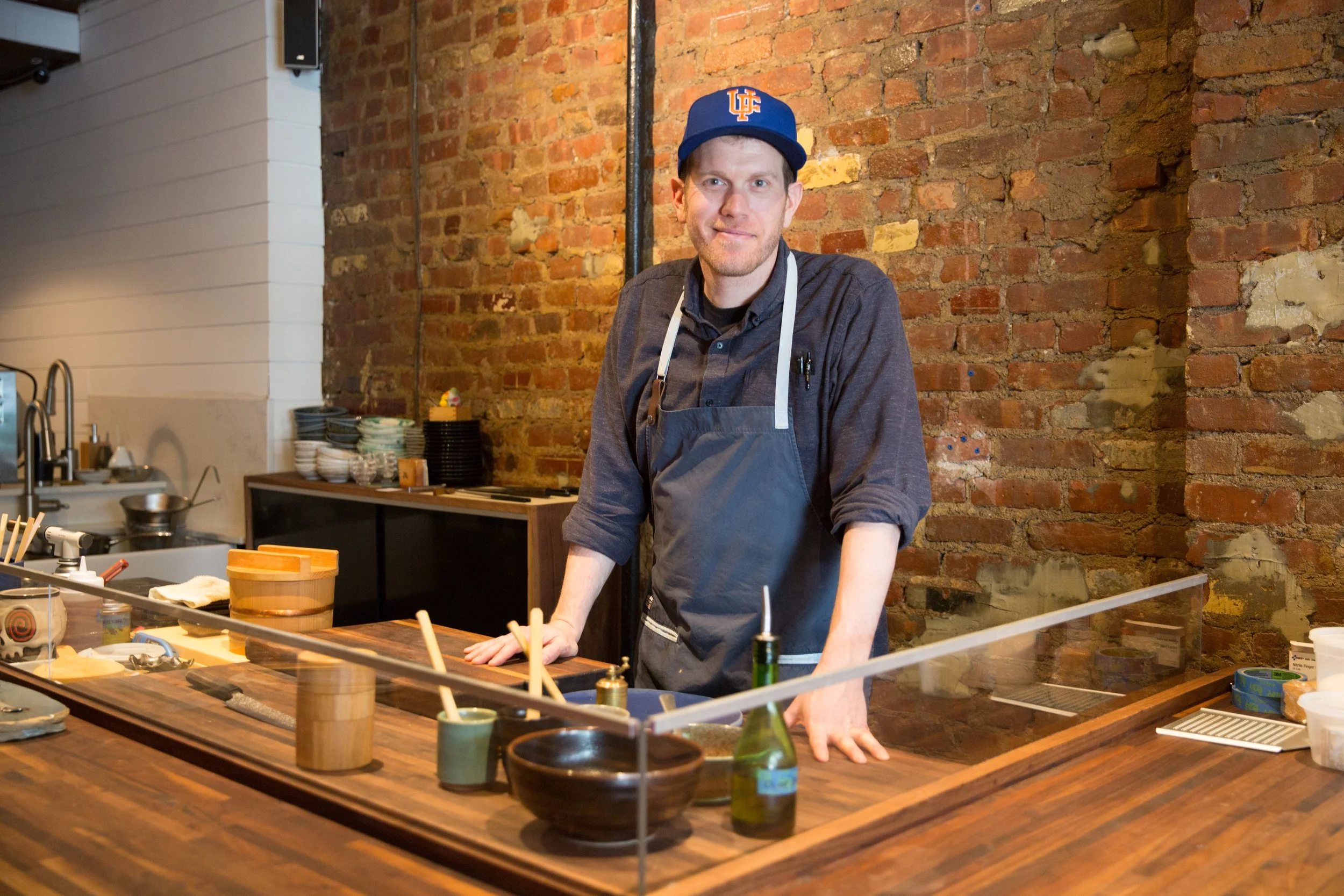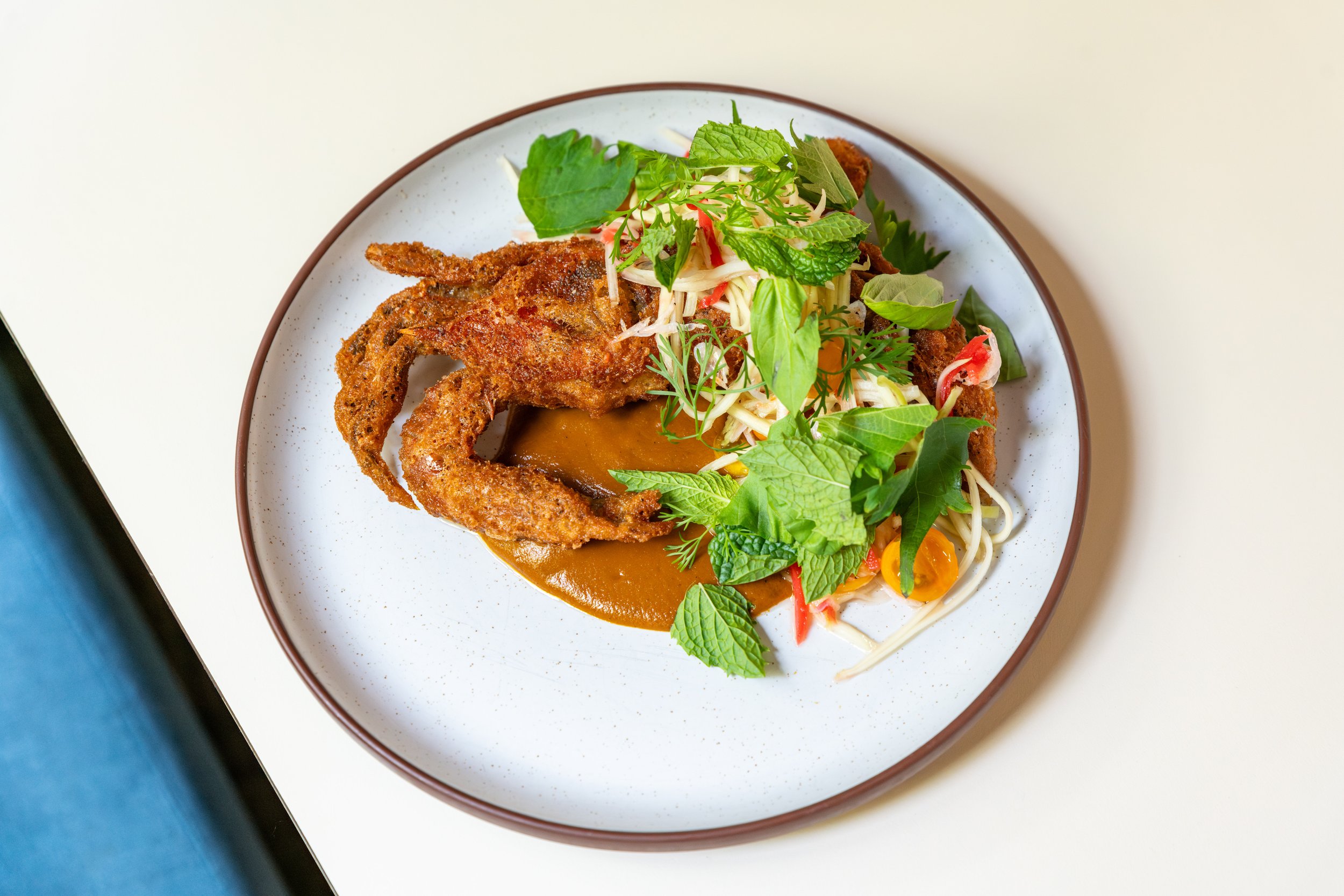A Sustainable Shrimp Tail
The lifecycle and upcycle of upstate New York shrimp at Mayanoki.
For his omakase at Mayanoki in Alphabet City, Chef Jeffrey Miller sources mostly local and exclusively sustainable seafood. That means no tuna or skipjack coming from Tokyo. Pacific shrimp are driven in from upstate New York. Eco Shrimp, based out of Newburgh, farms the shrimp in ultra-clean, low-density saltwater tanks, and sells the fresh crustaceans for $17 a pound.
Chef Jeffrey Miller of Mayanoki
Malaysian Style Laksa, Shallot, Ginger, Lemongrass, Garlic, Rhode Island Squid, Raspberry Point Oysters, Maitake Mushrooms.
Miller torches the tails for a sushi course and holds onto the heads and shells to make a shrimp paste for a warming and bright Malaysian-style laksa with Raspberry Point oysters and Point Judith Rhode Island squid. “I had wanted to make a laksa for a long time,” says Miller. “But I can’t use store-bought shrimp paste because of sustainability issues.”
Miller isn’t trying to recreate a Tokyo-style omakase, so Mayanoki’s menu—like its sourcing—isn’t traditional. And in his mise-en-place, the nutty, umami-packed shrimp paste is incredibly versatile: “It can go straight into soups, it can go into sauces. Anything that you want to taste like shrimp.” Miller makes about two quarts of the shrimp paste every six weeks and has never seen a batch perish … or go to waste.
Make Mayanoki’s Shrimp Paste
Pack a large pot with your leftover shrimp heads, shells, and some meat for texture.
Add lemongrass, ginger, garlic, shallots, and chiles.
Cook the mixture down over high heat, deglazing it repeatedly with a quart of dashi so it doesn’t burn.
When the mixture thickens to a caramelized onion-like consistency, deglaze one last time with fish sauce.
Blend everything into a smooth paste.








